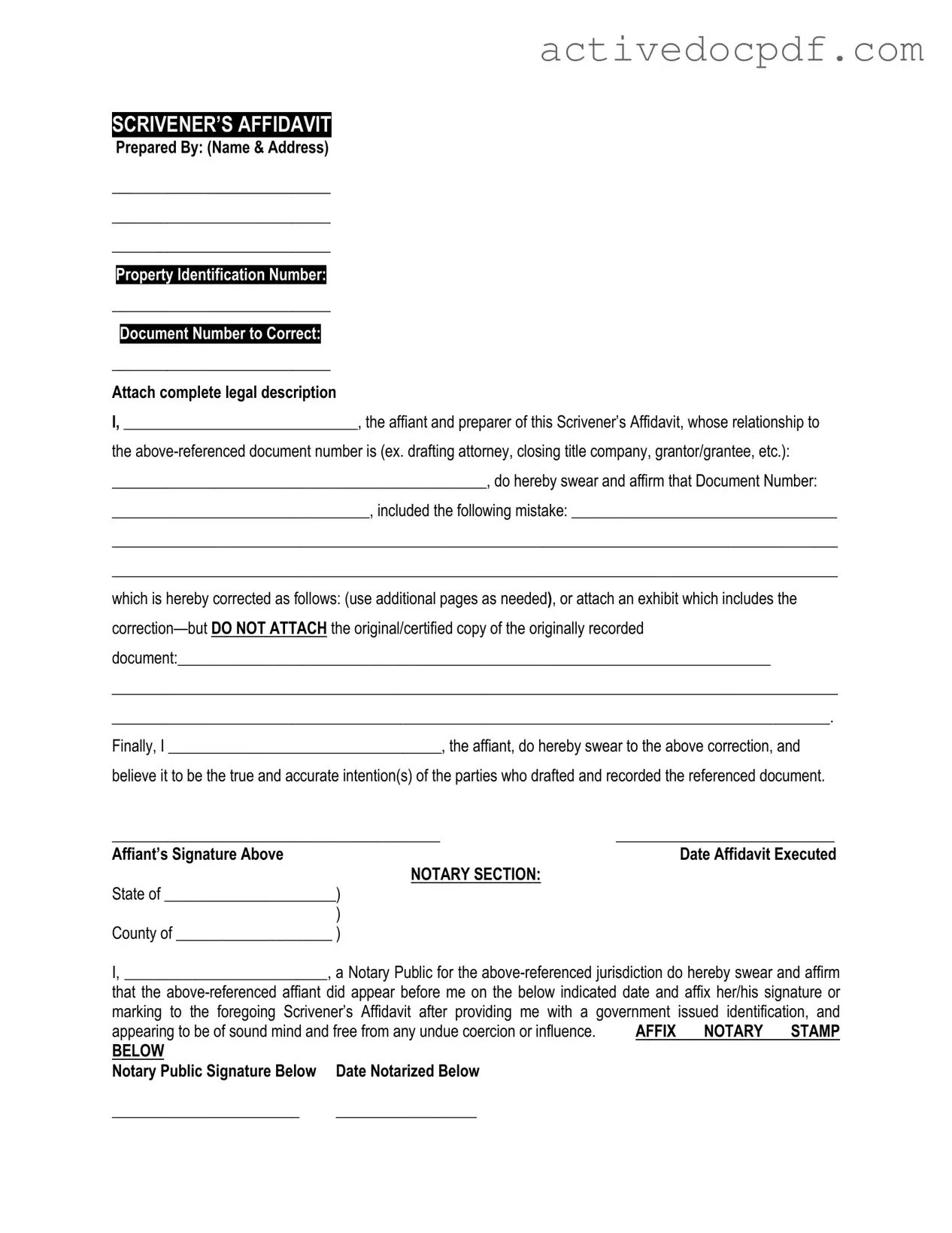What is a Scrivener's Affidavit?
A Scrivener's Affidavit is a legal document used to correct errors or clarify information in a previously executed document. This affidavit is typically prepared by a scrivener, or someone who writes down the details of a legal document. It serves to affirm that the original document reflects the intent of the parties involved, despite any mistakes that may have occurred during its drafting.
When should I use a Scrivener's Affidavit?
You should consider using a Scrivener's Affidavit when you discover an error in a legal document that needs correction. Common situations include:
-
Typographical errors, such as misspelled names or incorrect dates.
-
Misstatements of fact that do not alter the agreement's intent.
-
Clarifications of ambiguous language that could lead to confusion.
By using this affidavit, you can ensure that the original document accurately reflects the parties' intentions.
How do I complete a Scrivener's Affidavit?
Completing a Scrivener's Affidavit involves several steps:
-
Identify the specific errors or ambiguities in the original document.
-
Draft the affidavit, clearly stating the corrections needed.
-
Include a statement affirming that the corrections reflect the true intent of the parties.
-
Sign the affidavit in the presence of a notary public.
Ensure that all parties involved in the original document are aware of and agree to the changes being made.
Is a Scrivener's Affidavit legally binding?
Yes, a Scrivener's Affidavit is legally binding once it is properly executed and notarized. It serves as a formal acknowledgment of the corrections made to the original document. However, it is important to note that the affidavit does not change the original agreement; it merely clarifies it. Always consult with a legal professional if you have concerns about the binding nature of the affidavit.
Can I file a Scrivener's Affidavit with the court?
Yes, you can file a Scrivener's Affidavit with the court, especially if the original document is part of a court case or public record. Filing the affidavit ensures that the corrections are officially recognized. Check with your local court for specific filing procedures and requirements to ensure compliance.
